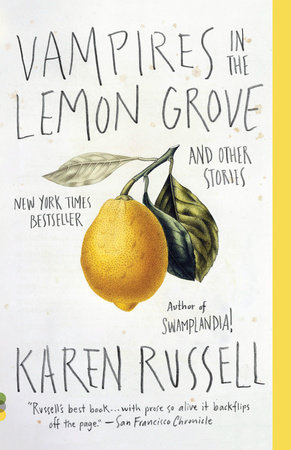The Little Mermaid sacrifices her tail for a human soul. The Navajo Changing Woman grows old and is reborn with the seasons. The nymph Daphne becomes a tree to escape lovesick Apollo. Women transform because we are hungry. We transform because we’re restless, and because we’re dangerous. Women transform seeking liberation from domesticity, obscurity, prescribed roles, our own bodies. We transform for fun.
My book Animal Wife is a collection of stories about women’s transformations, from girls into wives, mothers, and monsters. In “The Vanishing Point,” a woman constructs a mechanical deer suit to live in the woods behind her childhood home. In “Animal Wife,” a girl embarks on a quest to find her mother, who she believes is a swan. In “Desiree the Destroyer,” a timid proofreader creates a cage fighting alter ego.
I, and the ten women whose stories I’ve assembled here, use transformation to illuminate the raw places inside our female protagonists and their worlds. Our women escape, they devour, they create life—and they discover their true selves by stripping away their known skin.

“The Tiger’s Bride” from The Bloody Chamber and Other Stories by Angela Carter
In this story by the queen of modern mythology, a girl’s father loses her in a game of cards to a carnival-masked beast who carts her away to his palazzo, “a world in itself but a dead one, a burned-out planet.” She finds strength in her imprisonment (“He snuffed the air, as if to smell my fear; he could not.”), and when the beast offers to send her back to her father, she realizes that her existence has been as vacant as the clockwork maid who now serves her. “I was a young girl, a virgin, and therefore men denied me rationality just as they denied it to all those who were not exactly like themselves in all their unreason.” Rather than return to the father who had sold her, she transforms into a tigress whose vitality rivals the beast’s.

“The Mushroom Queen” from Tin House by Liz Ziemska
A restless wife wants more than she has; wants to be more than she is. One night, she wishes for “a placeholder, someone to keep her life intact while she goes on a little reconnaissance trip,” and she gets her wish, in the form of fungus. A mysterious Mushroom Queen transforms into the woman’s doppelganger and steals her life, while the original woman dissolves into a fungal colony, “the discontent of one calling to the desire of the other.” As the Mushroom Queen molds her new human life to her will, the original woman “runs her mycelium under fields of cabbages and cantaloupe,” trying to find her way back home.

“Reeling for the Empire” from Vampires in the Lemon Grove by Karen Russell
When a change in government bankrupts their families, women are recruited to work in a silk-reeling mill with the promise of an “imperial vocation” that would free their fathers and husbands from debt. They’re spirited away to a factory room with a single window where they’re forced to spin silk from their own bodies. As they feed their thread into a giant reeling machine, the girls transform into silk worms until “every droplet of our energy, every moment of our time flows into the silk.” The narrator, Kitsune, chafes in her new role and organizes a rebellion. “Who knows what the world will look like to us if our strike succeeds?” she says. “I believe we will emerge from it entirely new creatures. In truth there is no model for what will happen to us next.”

“Fatima, the Biloquist: A Transformation Story” from Heads of the Colored People by Nafissa Thompson-Spires
Fatima, one of two Black girls at her private school, “had existed like a sort of colorless gas” before she met Violet, a Black girl with albinism who is as confident as Fatima is insecure. Under Violet’s tutelage, Fatima “absorbed the sociocultural knowledge she’d missed…through committed, structured ethnographical study,” like watching Fresh Prince of Bel-Air. Although Fatima enjoys a newfound sense of self—“there was something prettier about her now”—her “transformation” is tested when she begins dating Rolf, a white boy from her school:
“The conventions of such a transformation dictate that a snaggletooth or a broken heel threatens to return the heroine to her former life. That snaggletooth, for Fatima, was either Rolf or Violet, depending on how you looked at things…”

“Babies” from Museum of the Weird by Amelia Gray
In this fierce, funny flash story, a woman awakens having given birth although she wasn’t pregnant. “But there he was, a little baby boy, swaddled among cotton sheets, sticky with amniotic fluid and other various baby-goops.” Although the woman’s boyfriend is “not amenable to babies,” she embraces her newfound motherhood and insists they keep the baby—and the one she births the next night, and the next…

“The Husband Stitch” from Her Body and Other Parties by Carmen Maria Machado
This narrator owns her desires and knows what she wants. She savors the way her body transforms through desire—“the silky suds between my legs are the color and scent of rust, but I am newer than I have ever been”—and through motherhood, and in the aftermath of birth, when the doctor obliges her husband’s request for “that extra stitch.” She gives her husband all of herself, and all she asks in return is that he refrain from touching the ribbon she wears around her neck. But, “brides never fare well in stories, and one should avoid either being a bride, or being in a story,” the narrator says. “After all, stories can sense happiness and snuff it out like a candle.”

“High Desert” from Awayland by Ramona Ausubel
A woman whose daughter drowned decades ago feels her uterus falling. She visits the doctor, she goes to the mall where she buys lime-green thongs—“they look fertile to her and she finds themselves wanting them, needing them”—she rides the bus. Throughout this deceptively simple day, the woman revisits the loss of her child and anticipates another loss as she considers a hysterectomy: “The problem is that her body was once a house where her daughter lived…. All these years she has carried the tiny inland sea her daughter swam in.”

“The Wives are Turning Into Animals” from May We Shed These Human Bodies by Amber Sparks
Men recall their wives’ “soft smooth faces” as the women acquire bestial features and strange appetites. The husbands are concerned about violating social boundaries (“that the neighbors will complain about the carcasses littering their lawns”) and grapple with deeper worries that gnaw at the roots of their marriages, “that their wives will finally fly or crawl or swim away, untethered from the promises that only humans make or keep.”

“How to Survive on Land” by Joy Baglio
Amphitrite and her twin sister Thetis are accustomed to the strange things their mother does, like eating shellfish for breakfast, keening like a whale, and showing off her glistening tail. She’s a mermaid, after all. But when the girls are twelve, their mother begins to change, starting with a fateful day at the aquarium when she dives into the beluga whale tank.
“She was still wearing her floral-print blouse, and her hair and shirt billowed with weightless beauty. I had never seen her like this: both fish and woman, something ancient and forgotten, no longer an invalid in an aqua chair, but mythic and powerful.”
When her restlessness becomes unbearable, the mermaid leads her family on a voyage to the Arctic where her daughters must confront their ancestry.

“Starver” from Fen by Daisy Johnson
In this story, which begins with the account of a 17th-century eel massacre, Katy stops eating. Her sister Suze tries to feed her, “surprising her with peeled carrots chopped into mouthfuls, chunks of melon, halved avocados,” but Katy resists and Suze can only watch helplessly as her sister withers and begins to transform into an eel. “[T]he skin on Katy’s arms was bleached of color; her mouth was a stretched line.” Even still, Suze enjoys a novel closeness with her sister. “In a way she’d never done when I trailed her to netball practice or balanced on the edge of the sofa while she and her friends watched films, she included me in this: her starving.”
The post 10 Short Stories About Women’s Transformations appeared first on Electric Literature.








